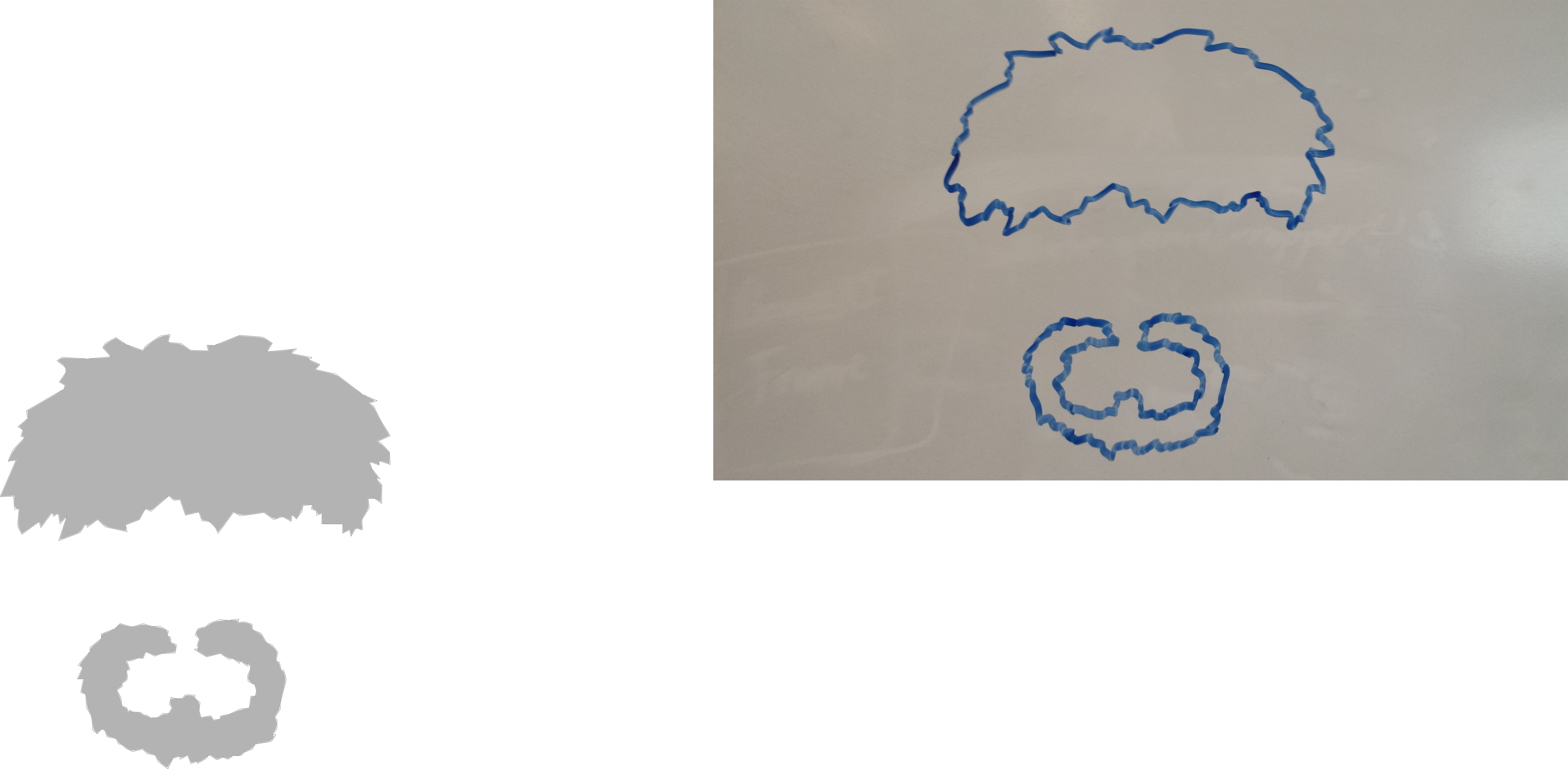Feb 03, 2019
GDC 2019 Prep: Business Cards
This will be my 5th year attending the GDC (holy crap!), and it’ll be my 3rd or 4th time ordering business cards. I’m not going to pretend like I’m an expert, but every year I’ve learned something new about business cards. I think last time’s edition could use a refresher.

Business cards have been said to be the currency of GDC. The general goal is to exchange them with people you care to form connections with and to do that they’re going to have to (A) remember you and (B) know how to reach you.
Most of your business cards will go in the trash. It’s a harsh reality. If you’re not exactly the person someone is looking for, it’s not worth hanging onto. It’s nothing personal.
One thing I’ve heard someone say before, and this is paraphrasing,
The exchange is not about giving people your business card. It’s about getting someone else’s.
That is, reaching out is always on you. There is absolutely no obligation to contact any of the people you meet. You might get exactly zero people actually contacting you even if you exchange cards with over 100 people.
I’ve kept every single one I’ve received and occasionally I go back through them, but I think I’m in a minority of people who do that.
The Process
I’ve made adjustments almost every year for the conference and find ways to reuse the old ones in various ways such as jotting down notes, handing out in non-networking contexts, and so on. I also print out two sets since I do exchanges in multiple languages. For instance, if you’re going to be doing an exchange with 日本人, there are certain expectations on how business cards are designed and a great deal of etiquette you should follow. If you’re curious about other etiquette associated with exchanging cards, ask your favorite search engine. It’s really fascinating.
Let’s walk through my steps taken from my first year since they were 90% of the battle, and beginner’s luck actually worked out for me. I had 2 weeks before GDC and based on average turnaround for print shops I decided I had about 2 days to design a card for myself.
Design Process
My first step was to choose a way to brand myself. This assumes you’re there primarily advertising yourself as opposed to being a facet of your employer. Think of what helps people to remember you. People have always said my hair is what they use to remember me. I can’t blame them. So that’s how we end up with this.

The top right is a sketch I scribbled on a whiteboard in about 30 seconds. I snapped a picture, loaded it into Inkscape, and traced it with a vector outline. I then did a simple fill and viola! Instant silhouette. That’s how we get the bottom left logo.
Editor Notes
Before starting on a card design, it’s a good idea to prepare yourself accordingly. Here are a few straightforward tips if you’re a DIYer like myself.
- Find some print shops first and download their business card templates. For printing there’s usually a trim zone, a bleed zone, and safe zone. This is why alignment will look funny in my pictures: it’s extra space to make sure nothing important gets cut off by a few millimeters. All important content (like text and logos) must be in the safe zone. Print templates outline these for you.
- Use an image editor that allows layers. This allows you to make your first layer the print template. You can then set its alpha (opacity) to maybe 70% and toggle it to check if your design fits well.
- Dedicate a layer to anything you consider a separate element. This makes editing later and toggling parts of it much easier. In my case there are 6 layers on the front side (see below). The template image, the header background (that blue top part), my name, my title, my logo, and my contact info. I later added 2 extra layers for my Japanese name/title, making for a total of 8 layers now.
- Always keep an easy-to-edit copy lying around. I use Paint.net, so I always keep the
.pdnfiles handy. This made creating a Japanese version super easy over 2 years later.
My Design
Then I went about making the front and back sides of the card. I wanted them to resemble the color scheme of this website, which had come into existence not too long before making the card.


To the right is the back side of my card. Many people will leave this blank, but in my case I added what I think to be a cute joke.1 Yet another thing to make myself memorable.
But wait… it’s empty? Indeed, this is a space for the recipient of my card to fill out. It’s common for people to write notes on business cards, particularly to help remember talking points, what you looked like, etc.2 Anything that helps in writing a personalized follow up email later.
It’s uncommon to do a portrait orientation for a business card. Most are landscape orientation. This is a toss-up because if a card is too out-of-the-ordinary, it can be a little frusterating to deal with. Cards that introduce frustration becomes a higher risk to be tossed out. Cards that are hard to write on, or cards that are odd sizes are at highest risk of being lost or discarded. In my case, the reasoning is that when someone is reviewing a stack of cards later, they will need to rotate it to read it. It stands out just a tiny bit. Maybe it helped, maybe it didn’t.
Card Stock
Next up is choosing card stock. I highly recommend using an uncoated stock (no finish). Many places offer gloss/matte finishes, but these are more difficult to write on. I almost always forget people with glossy finishes, and similarly with matte. The uncoated cards are easy to write on, provided there’s some white space. Indeed, it is no coincidence my card has plenty of white space. Choosing a relatively thick stock also gives your card a sturdy feel. It’s nice and tactile, which reflects well on you, strangely enough.
I didn’t get quite the card-stock I meant to last year. I got one a little less thick than usual thinking it was the right one, but they ended up being a little more flimsy than I usually like.
Color Conversion
So the big gotcha about ordering any printed materials is that many printers prefer the CMYK colorspace. Most images are saved in RGB. Some sites will automatically convert for you, but it’s hard to know what kind of color shifting will take place. The thing is, when you convert to CMYK some colors will appear darker on a computer screen, but once on paper they tend to look normal again. Pretty odd concept.
Try throwing some images through a CMYK converter and see how they turn out. They will never look exactly the same, but that’s totally fine. Just make sure the converter knows what your card finish is so that it can intelligently convert colors.
This is another place I screwed up last year. The colors didn’t turn out right. If you get a card proof and it looks a little off when printed on paper, even if it’s nitpicky stuff like colors looking just a little off or being a tiny bit grainy looking, DO NOT TRUST IT. I think that some CMYK converters are a little wonky so give yourself time to experiment. However, the results will vary based on card stock.
Review
So here are some basic principles I suggest you adhere to when making a personal business card.
- Brand yourself. Stand out and make it memorable.
- Scribble friendly. Make your card easy to write on. Plenty of white space, sturdy uncoated card stock, etc.
- Use a good image editor that supports layers and load up your print shop’s template as a starting point.
- Don’t forget to check if CMYK is required by your print shop, online or otherwise. Be sure to tell your converter what card stock you’re using.
Hope this saves someone else the hassle of researching in an 8 hour frenzy. If you’re looking for a good print shop with a quick turnaround, check out UPrinting. It’s what I used, but there are many options out there. Do some research and compare prices/options yourself if you’re unsure.
-
For those of you who are not programming-savvy, it’s a header file with my name. Header files are what the C/C++ languages use to list out functions, classes, and other parts that make up a program without actually implementing any logic. These files are often filled with comments, text that is ignored by the compiler, to document the code. The slashes and asterisks represent one such comment block. ↩
-
Don’t do this in front of people, especially if you’re doing a formal Japanese exchange. It can be considered a sign of great disrespect. ↩
You're welcome to contact me though.